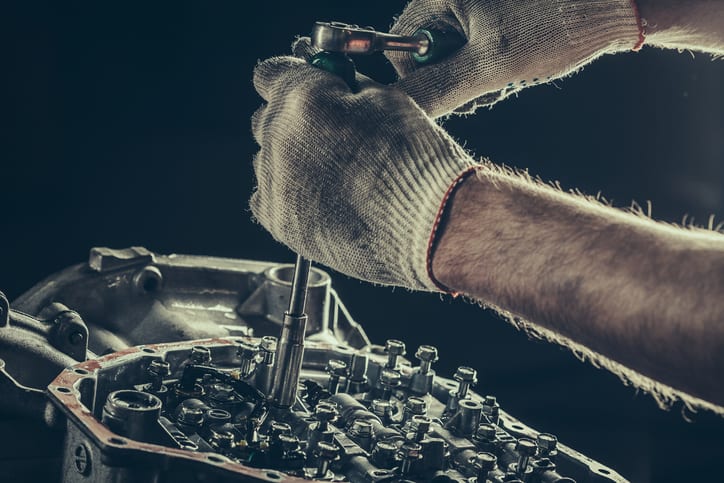Mercedes-Benz vehicles are respected and well-known luxury and sports cars in the automotive industry — and they didn’t get there by accident. Mercedes-Benz has a track record of offering advanced and state-of-the-art vehicles; this includes transmission systems.
For those that don’t know, the transmission system in the car, whether automatic or manual, is one of the most critical parts of the car and helps it move by changing gears and can impact your fuel economy. The term transmission refers to the whole drivetrain, including the clutch, gearbox, prop shaft, and more.
Let’s look at how Mercedes-Benz transmissions have changed over the years.
Mercedes-Benz Transmissions Over the Years
To stay innovative, Mercedes-Benz first introduced the automatic transmission for their brand in 1961. Instead of using a torque converter, the new transmission had a hydraulic start-up clutch which helped reduce downtime. Eventually, automatic transmission became more ubiquitous, and by 1975, Mercedes-Benz produced its one-millionth car with automatic transmission.
Over time, Mercedes evolved to improve the overall customer experience by including things like the limp-home mode, which indicates a problem with a vehicle transmission. Likewise, they continued to improve their transmission models. Eventually, they evolved to offer the 722.9 transmission common in Mercedes models from 2006 to 2017. Mercedes also added the seven-speed automatic transmission 7G-Tronic, which began production in 2003 and is still used today.
Mercedes Manual vs Automatic Transmission
While automatic transmissions are more common today, Mercedes-Benz still manufactures manual transmission, or manual gearbox, models of their compact cars for the serious gearheads out there.
If you are looking to buy a car and aren’t sure whether you should go with an automatic or stick shift, take some time to consider the following:
Manual cars tend to be more engaging for the driver and require more focus. If you want a sportier, more controlled experience in your car, a stick shift may be perfect for you.
If you are looking for something user friendly, automatic is probably best. Automatic cars are easy to drive and offer better gas mileage. However, if you still aren’t 100% sold on an automatic car and like the focus of a manual car, you can look for automatic cars that offer a shiftable automatic transmission, that way, you can get the best of both worlds.
Get Help at Adsitco
If you need help with your Mercedes-Benz transmission, whether automatic or manual, our team at Adsitco is here to give you the guidance you need. For example, if you need help changing the conductor plate or need some expert advice on the valve body, we are here for you.
We have a great database online to search for parts for your car based on your Mercedes-Benz vehicle’s year, model, and category.
Check out our website or give us a call today to learn more about how we can help you.

